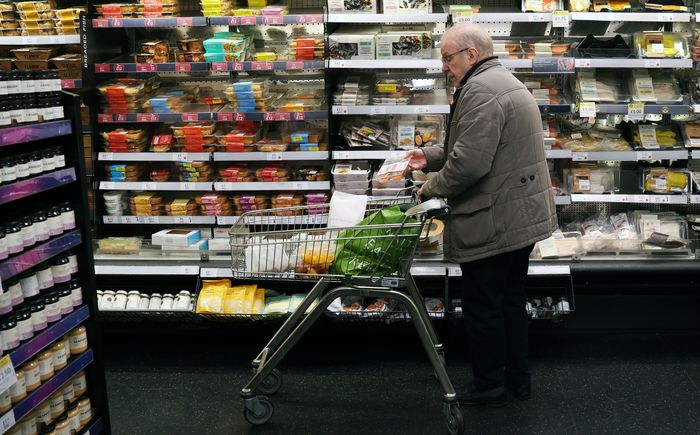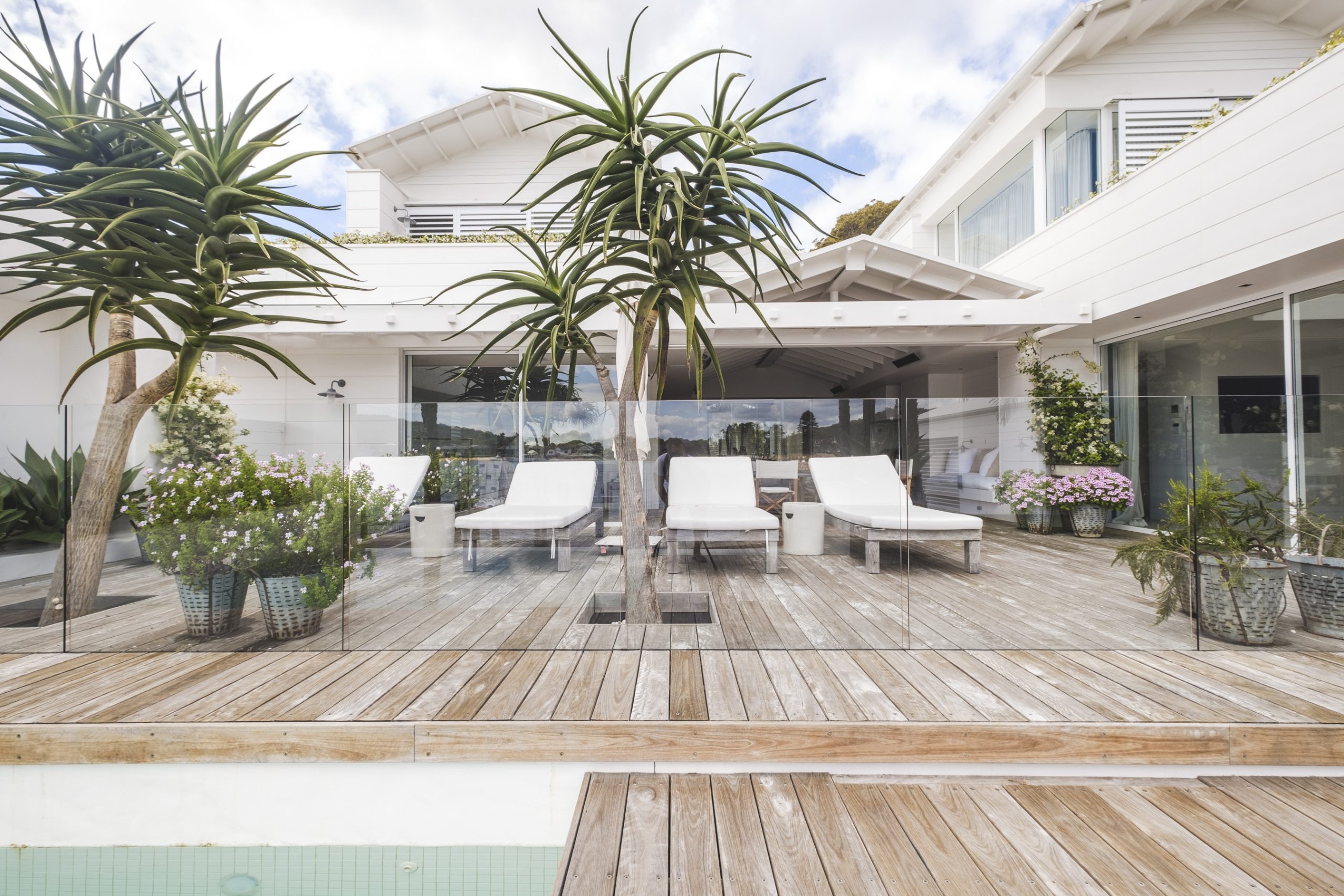The Global Fight Against Inflation Has Turned a Corner
Falling inflation across industrialized countries opens the door for central banks to start cutting interest rates next year
Inflation is falling faster than expected across advanced economies, marking a turning point in central banks’ two-year battle against surging prices.
Declines in consumer price growth, to below 5% in the U.K. last month and around 3% in the U.S. and eurozone, are fueling expectations that central banks could take their feet off the brakes and pivot to cutting interest rates next year.
That would provide welcome relief to a global economy that is struggling outside the U.S., increasing the prospects of a soft landing from a historic series of interest-rate increases without large increases in unemployment. Europe, in particular, is on the brink of recession.
Yields on government debt in Europe and the U.S. have slumped as investors start to price in earlier interest-rate cuts.
For months this year, economists puzzled over why growth and inflation hadn’t slowed more in response to interest-rate hikes. Now, there is growing evidence that higher borrowing costs are biting hard with a delay.
“It’s definitely a turning point for inflation,” said Stefan Gerlach, a former deputy governor of Ireland’s central bank. “Investors may be surprised at how rapidly central banks cut interest rates next year, maybe by one-and-a-half percentage point.”
The sharp declines in inflation across continents underscore how common factors drove up prices in the first place, especially the Covid-19 pandemic and Russia’s war in Ukraine. These crimped global supply chains, reduced the number of people in the workforce and fueled energy price increases, especially in Europe. As those forces subside, price pressures naturally ease.
Inflation was also given a boost by demand-side factors, such as trillions of dollars of government stimulus spending in the U.S., as well as pent-up demand and savings from consumers that accumulated during the pandemic. That, economists say, is why underlying inflation remains strong nearly four years after the start of the pandemic, and why rate increases were needed to bring it down.
Lower inflation “shows the effect of increasing rates by 4 or 5 percentage points,” Gerlach said. “Team Transitory were wrong,” he added, referring to a debate among economists over whether high inflation would subside by itself, a camp to which he belonged. “Our idea was that inflation would fall back without an increase in interest rates.”
Even countries where inflation has proved the most stubborn, such as the U.K., have started to show progress. Consumer prices rose 4.6% in October compared with the year-ago month, a drop from the 6.7% rate of inflation recorded in September and the slowest increase since October 2021, the statistics agency said Wednesday. Economists had expected to see a decline to 4.8%.
“The U.K. no longer looks like such a major outlier when it comes to inflation,” said Bruna Skarica, an economist at Morgan Stanley.
News of the U.K. decline followed Tuesday’s report of a larger than expected drop in U.S. inflation to 3.2% in October. The eurozone also reported a decline in inflation to 2.9% in October from 4.3% in September. Consumer prices were lower than a year earlier in Belgium and the Netherlands.
The cooling of consumer prices has persuaded some European policy makers that the battle to tame inflation has been won, and in a shorter period of time than in the 1970s, when a comparable surge in prices occurred.
“We’re in the process of exiting the inflationary crisis,” said France’s Bruno Le Maire before meeting with his fellow European Union finance ministers last week. “In a little under two years, Europe will have managed to control inflation, which weighs on our citizens, which weighs on households, especially the less wealthy.”
Investors are also more optimistic. They are pricing in interest-rate cuts by the Federal Reserve and European Central Bank starting next spring, and by the Bank of England next summer, according to data from Refinitiv.
Markets had priced a 30% probability of another rate increase by the Fed, from its current level of 5.25% to 5.5%, until publication of U.S. inflation data on Tuesday. That probability has now fallen to 5%, according to Deutsche Bank analysts. The prospect of a Fed rate cut by May soared from 23% on Monday to 86% by Tuesday‘s close.
Central bankers are more cautious after being surprised last year by the persistence of inflation. The Bank of England last month said it is too soon to think about cutting interest rates, having forecast that inflation would reach its 2% target in late 2025. Central bankers also point to the still-rapid rise in wages and the risk of higher energy prices if the conflict between Israel and Hamas spreads to other parts of the Middle East.
Morgan Stanley’s economists expect to see the Bank of England start to cut rates beginning next May, followed by the Federal Reserve and the European Central Bank in June. Regardless of the exact timing, there is a growing consensus that inflation is on the wane and lower interest rates will follow.
“We expect widespread declines in inflation and interest rates in 2024 across advanced economies,” Michael Saunders, a former BOE rate setter, wrote in a note to clients of Oxford Economics.
If so, it would raise the question of whether central banks overdid it with rate increases, especially in Europe.
Economists say those hikes are working their way through the economy, weighing on lending and spending. Job creation is slowing and unemployment is edging higher on both sides of the Atlantic, curbing wage growth. Households are becoming more reluctant to spend, as higher interest rates make it more advantageous to save, economists say. That weighs on growth prospects over the coming months.
U.S. retail sales fell 0.1% in October from a month earlier, the Commerce Department said Wednesday. That is the first decline since March and comes after a 0.9% increase in September. In the eurozone, industrial output declined by 1.1% in September from the previous month, official data showed on Wednesday.
The decline in inflation will be welcome news for political leaders, even if it has yet to boost their popularity.
While global factors contributed to the worst of the inflation surge and most of the recent decline, domestic economic conditions are likely to matter most as central banks enter the final stage—the so-called “last mile”—of getting inflation down to their targets of around 2%.
In the U.S., inflation is ebbing, as the labor market and consumer spending cool but remain solid. This has bolstered forecasts that price pressures will keep easing without a recession.
In Europe, the economic backdrop is more challenging. The continent faces headwinds to growth, from slowing global trade and sluggish growth in China, a critical export market, to efforts by governments to slow spending. Germany’s constitutional court on Wednesday ruled against a move by Chancellor Olaf Scholz‘s government to repurpose €60 billion in unused pandemic funds to finance green energy initiatives, creating a large hole in the state budget.
European households have also been more reluctant than their U.S. counterparts to spend pandemic-era savings. All that could lead to a deeper downturn and sharper drop in inflation in Europe, prompting earlier rate cuts by the ECB.
Despite the likelihood of lower interest rates ahead, a return to the period of ultra low interest rates that preceded the pandemic is deemed unlikely by many economists and investors, reflecting rising geopolitical tensions and demographic pressures.
Workforces are likely to shrink across major economies, including China, over the coming years as millions of baby boomers retire, driving up wages. And friction between China and the West will likely raise manufacturing costs as companies shift factories to other countries.
 Copyright 2020, Dow Jones & Company, Inc. All Rights Reserved Worldwide. LEARN MORE
Copyright 2020, Dow Jones & Company, Inc. All Rights Reserved Worldwide. LEARN MORE
This stylish family home combines a classic palette and finishes with a flexible floorplan
Just 55 minutes from Sydney, make this your creative getaway located in the majestic Hawkesbury region.
Impact investing is becoming more mainstream as larger, institutional asset owners drive more money into the sector, according to the nonprofit Global Impact Investing Network in New York.
In the GIIN’s State of the Market 2024 report, published late last month, researchers found that assets allocated to impact-investing strategies by repeat survey responders grew by a compound annual growth rate (CAGR) of 14% over the last five years.
These 71 responders to both the 2019 and 2024 surveys saw their total impact assets under management grow to US$249 billion this year from US$129 billion five years ago.
Medium- and large-size investors were largely responsible for the strong impact returns: Medium-size investors posted a median CAGR of 11% a year over the five-year period, and large-size investors posted a median CAGR of 14% a year.
Interestingly, the CAGR of assets held by small investors dropped by a median of 14% a year.
“When we drill down behind the compound annual growth of the assets that are being allocated to impact investing, it’s largely those larger investors that are actually driving it,” says Dean Hand, the GIIN’s chief research officer.
Overall, the GIIN surveyed 305 investors with a combined US$490 billion under management from 39 countries. Nearly three-quarters of the responders were investment managers, while 10% were foundations, and 3% were family offices. Development finance institutions, institutional asset owners, and companies represented most of the rest.
The majority of impact strategies are executed through private-equity, but public debt and equity have been the fastest-growing asset classes over the past five years, the report said. Public debt is growing at a CAGR of 32%, and public equity is growing at a CAGR of 19%. That compares to a CAGR of 17% for private equity and 7% for private debt.
According to the GIIN, the rise in public impact assets is being driven by larger investors, likely institutions.
Private equity has traditionally served as an ideal way to execute impact strategies, as it allows investors to select vehicles specifically designed to create a positive social or environmental impact by, for example, providing loans to smallholder farmers in Africa or by supporting fledging renewable energy technologies.
Future Returns: Preqin expects managers to rely on family offices, private banks, and individual investors for growth in the next six years
But today, institutional investors are looking across their portfolios—encompassing both private and public assets—to achieve their impact goals.
“Institutional asset owners are saying, ‘In the interests of our ultimate beneficiaries, we probably need to start driving these strategies across our assets,’” Hand says. Instead of carving out a dedicated impact strategy, these investors are taking “a holistic portfolio approach.”
An institutional manager may want to address issues such as climate change, healthcare costs, and local economic growth so it can support a better quality of life for its beneficiaries.
To achieve these goals, the manager could invest across a range of private debt, private equity, and real estate.
But the public markets offer opportunities, too. Using public debt, a manager could, for example, invest in green bonds, regional bank bonds, or healthcare social bonds. In public equity, it could invest in green-power storage technologies, minority-focused real-estate trusts, and in pharmaceutical and medical-care company stocks with the aim of influencing them to lower the costs of care, according to an example the GIIN lays out in a separate report on institutional strategies.
Influencing companies to act in the best interests of society and the environment is increasingly being done through such shareholder advocacy, either directly through ownership in individual stocks or through fund vehicles.
“They’re trying to move their portfolio companies to actually solving some of the challenges that exist,” Hand says.
Although the rate of growth in public strategies for impact is brisk, among survey respondents investments in public debt totaled only 12% of assets and just 7% in public equity. Private equity, however, grabs 43% of these investors’ assets.
Within private equity, Hand also discerns more evidence of maturity in the impact sector. That’s because more impact-oriented asset owners invest in mature and growth-stage companies, which are favored by larger asset owners that have more substantial assets to put to work.
The GIIN State of the Market report also found that impact asset owners are largely happy with both the financial performance and impact results of their holdings.
About three-quarters of those surveyed were seeking risk-adjusted, market-rate returns, although foundations were an exception as 68% sought below-market returns, the report said. Overall, 86% reported their investments were performing in line or above their expectations—even when their targets were not met—and 90% said the same for their impact returns.
Private-equity posted the strongest results, returning 17% on average, although that was less than the 19% targeted return. By contrast, public equity returned 11%, above a 10% target.
The fact some asset classes over performed and others underperformed, shows that “normal economic forces are at play in the market,” Hand says.
Although investors are satisfied with their impact performance, they are still dealing with a fragmented approach for measuring it, the report said. “Despite this, over two-thirds of investors are incorporating impact criteria into their investment governance documents, signalling a significant shift toward formalising impact considerations in decision-making processes,” it said.
Also, more investors are getting third-party verification of their results, which strengthens their accountability in the market.
“The satisfaction with performance is nice to see,” Hand says. “But we do need to see more about what’s happening in terms of investors being able to actually track both the impact performance in real terms as well as the financial performance in real terms.”
This stylish family home combines a classic palette and finishes with a flexible floorplan
Just 55 minutes from Sydney, make this your creative getaway located in the majestic Hawkesbury region.






















